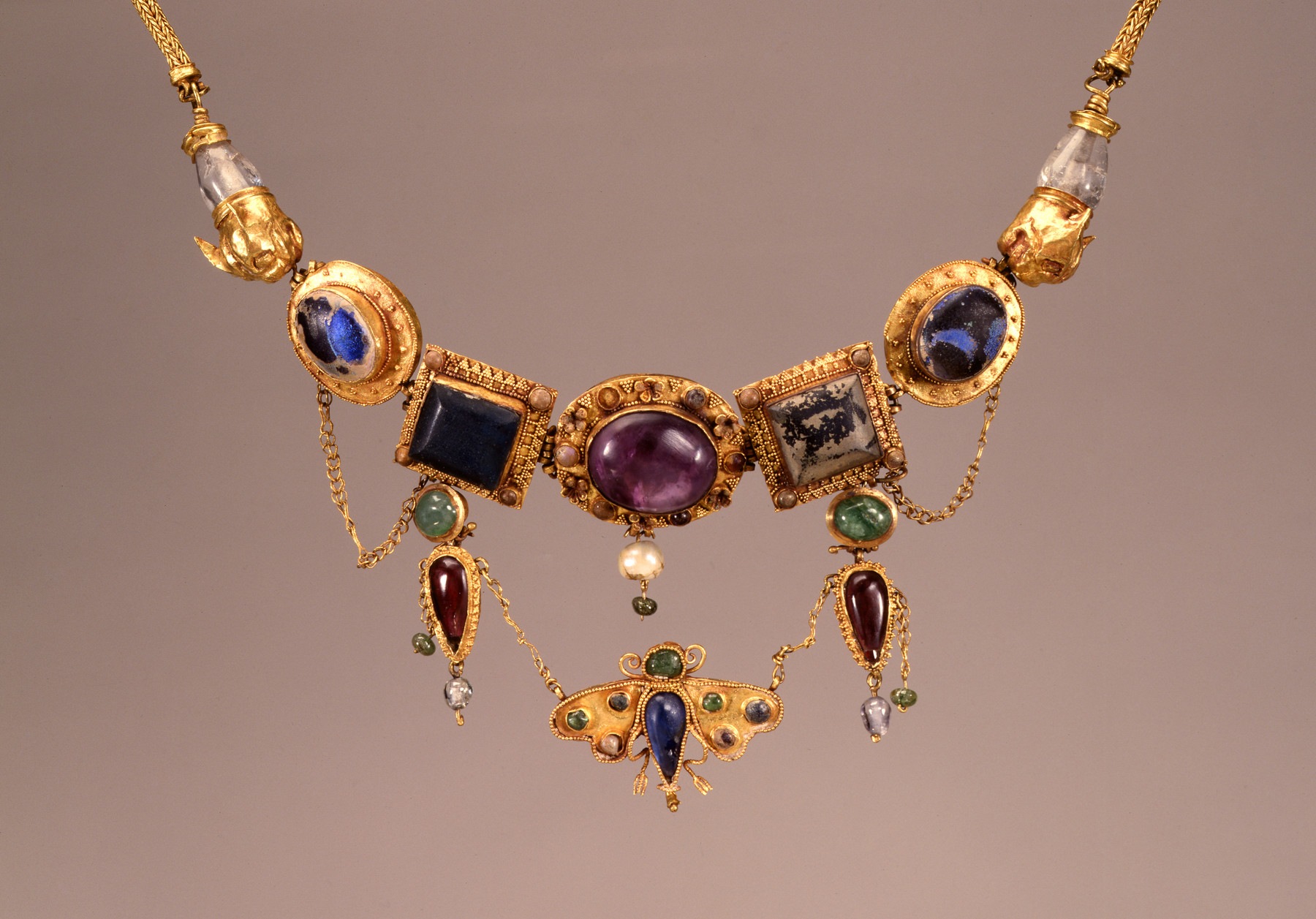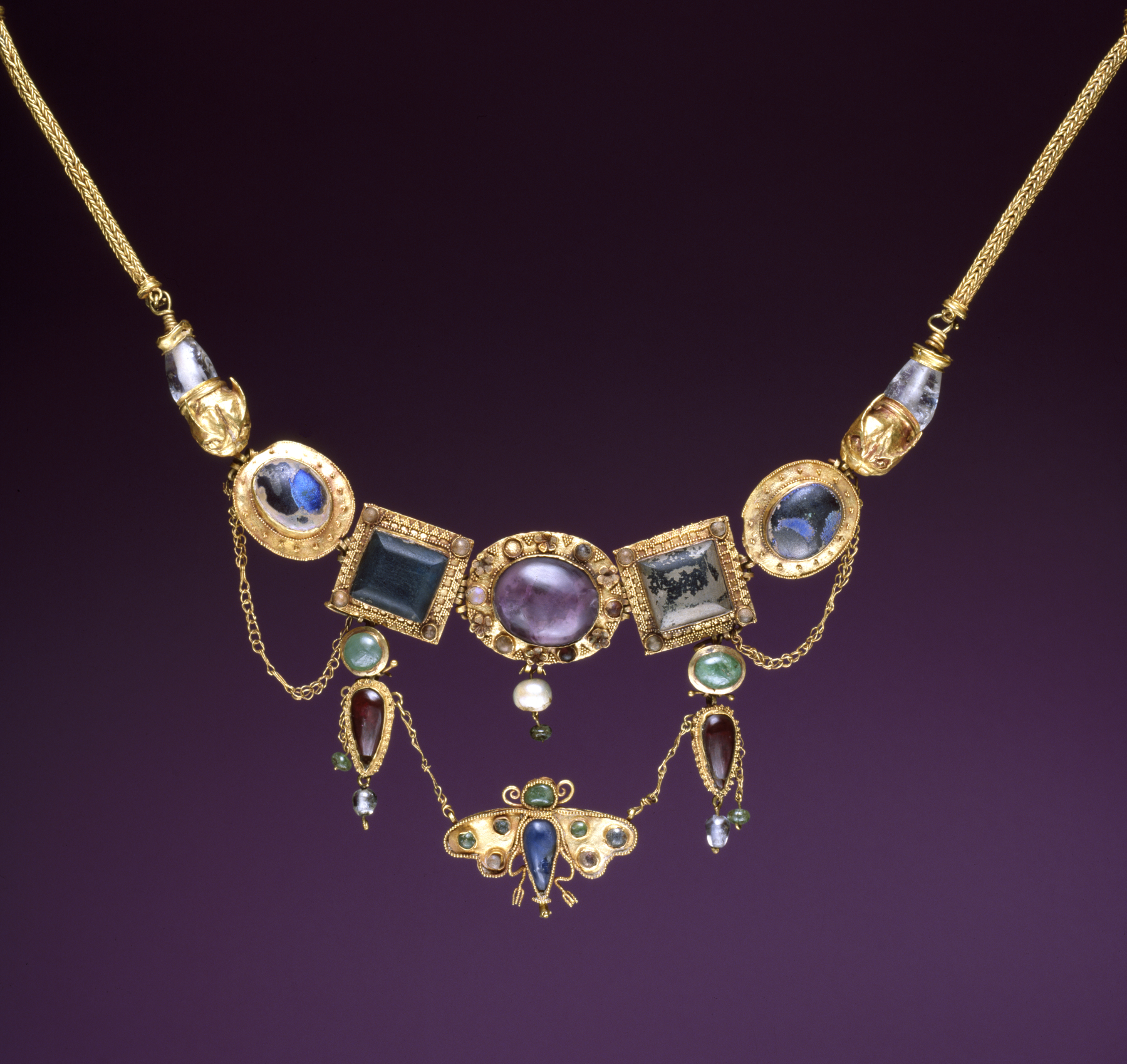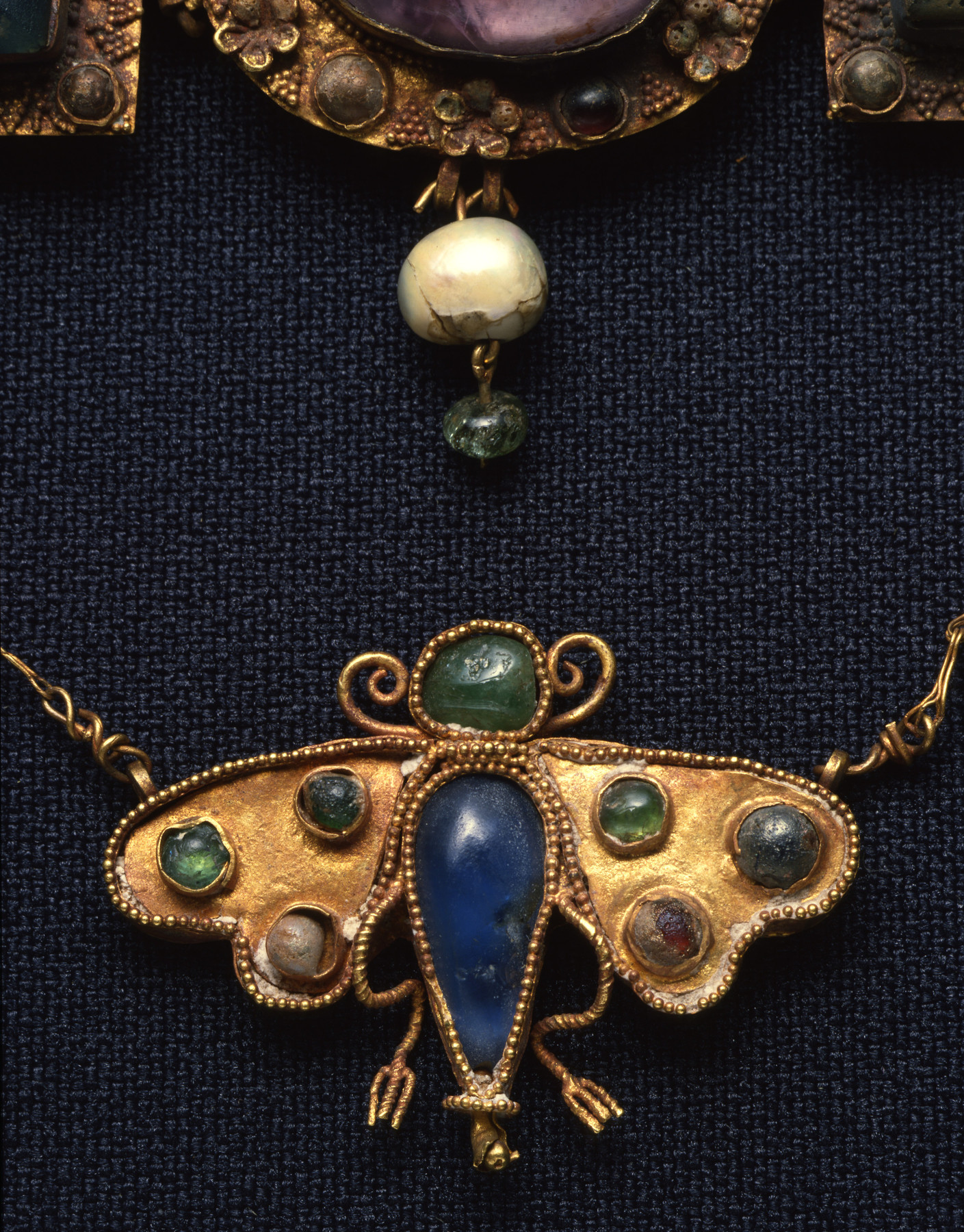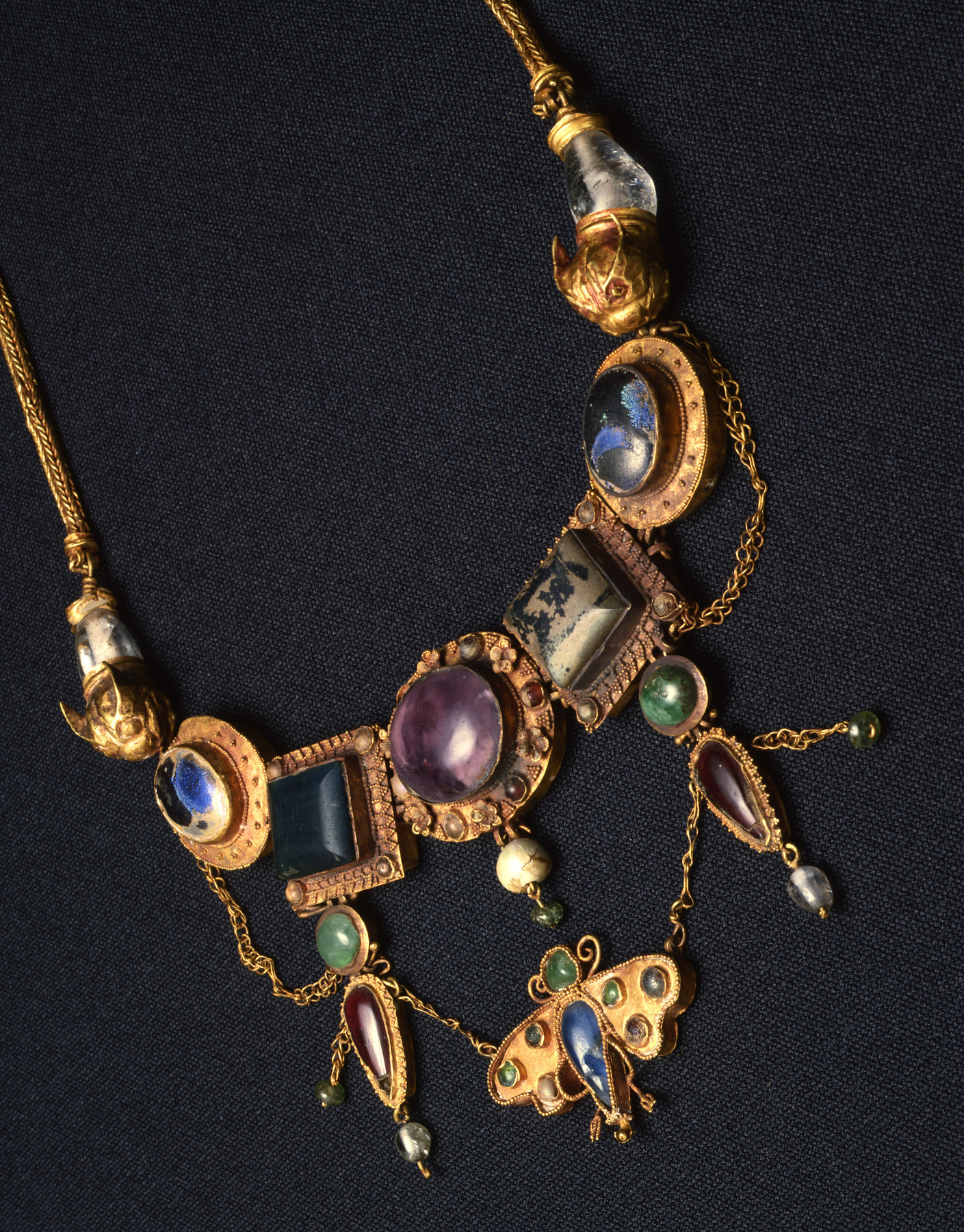Necklace with Butterfly Pendant
(Ancient Greece , Jewelry)
Elaborate diadems or necklaces featuring centerpieces of inlaid stones, pendants, and beaded chains go back to 3rd- and 2nd-century Greek jewelry. This necklace was found on the neck of the deceased; as the symbol of the soul, the butterfly was an appropriate motif for a burial gift.
Provenance
Provenance (from the French provenir, 'to come from/forth') is the chronology of the ownership, custody, or location of a historical object. Learn more about provenance at the Walters.
[Discovered in 1891, in a tomb near Olbia, Parutino, Ukraine]; Postnikov, Moscow, by purchase [from a local dealer in Ukraine]; Spinks, London, by purchase [around the turn of the century]; Peter Mavrogordato, 1913, by purchase [on the art market]; Collection of F. L. van Gans?, Frankfurt, 1913-1920, by purchase; Galerie Bachstitz, The Hague [catalogue 1921, part II, lot 92 B]; Henry Walters, Baltimore, 1926, by purchase; Walters Art Museum, 1931, by bequest.
Exhibitions
| 2019-2021 | Excursions through the Collection: Portraiture, Adornment, and the Natural World. |
| 1988-1989 | From Alexander to Cleopatra: Greek Art of the Hellenistic Age. The Walters Art Gallery, Baltimore. |
| 1979-1980 | Jewelry - Ancient to Modern. The Walters Art Gallery, Baltimore. |
Conservation
| Date | Description | Narrative |
|---|---|---|
| 2/28/1979 | Treatment | cleaned; stabilized |
| 10/28/1988 | Treatment | other |
| 10/28/1988 | Treatment | repaired |
| 11/8/1988 | Treatment | stabilized |
Geographies
Greece
(Place of Origin)
Ukraine, Parutino (Olbia) (Place of Discovery)
Measurements
2 15/16 x 13 x 1/2 in. (7.5 x 33 x 1.3 cm);
12 7/8 in. (32.7 cm) (l.)
Credit Line
Acquired by Henry Walters, 1926
Location in Museum
Accession Number
In libraries, galleries, museums, and archives, an accession number is a unique identifier assigned to each object in the collection.
In libraries, galleries, museums, and archives, an accession number is a unique identifier assigned to each object in the collection.
57.386










